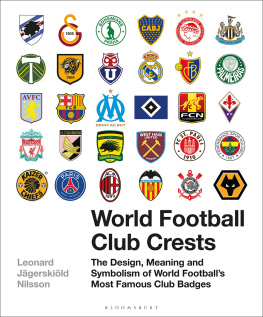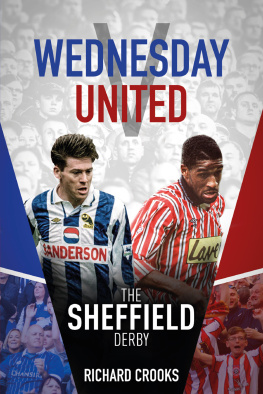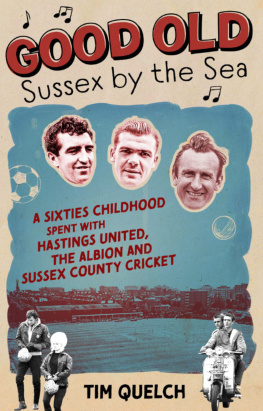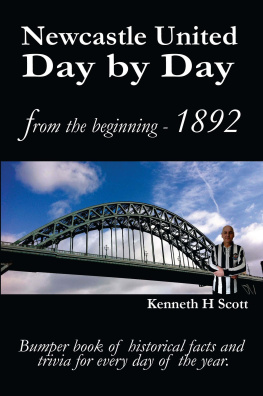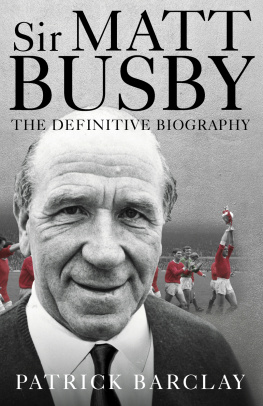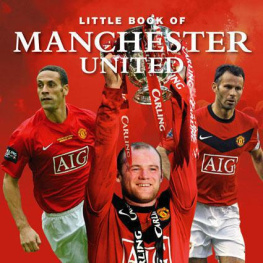
BLOOMSBURY SPORT
Bloomsbury Publishing Plc
50 Bedford Square, London, WC1B 3DP, UK
BLOOMSBURY, BLOOMSBURY SPORT and the Diana logo are trademarks of Bloomsbury Publishing Plc
First published in Great Britain in 2018
Text copyright Leonard Jgerskild Nilsson in 2018
First published by Pintxo Frlag, Sweden in 2016
This electronic edition published in 2018 by Bloomsbury Publishing Plc
Published by agreement with the Kontext Agency, Sweden
Leonard Jgerskild Nilsson has asserted his right under the Copyright, Designs and Patents Act, 1988, to be identified as Author of this work. All rights reserved.
All rights reserved
You may not copy, distribute, transmit, reproduce or otherwise make available this publication (or any part of it) in any form, or by any means (including without limitation electronic, digital, optical, mechanical, photocopying, printing, recording or otherwise), without the prior written permission of the publisher. Any person who does any unauthorised act in relation to this publication may be liable to criminal prosecution and civil claims for damages.
No part of this publication may be reproduced or transmitted in any form or by any means, electronic or mechanical, including photocopying, recording, or any information storage or retrieval system, without prior permission in writing from the publishers Bloomsbury Publishing Plc does not have any control over, or responsibility for, any third-party websites referred to or in this book.
All internet addresses given in this book were correct at the time of going to press. The author and publisher regret any inconvenience caused if addresses have changed or sites have ceased to exist, but can accept no responsibility for any such changes.
A catalogue record for this book is available from the British Library
Library of Congress Cataloguing-in-Publication data has been applied for
ISBN: 978-1-4729-5425-1 (HB)
ISBN: 978-1-4729-5424-4 (eBook)
ISBN: 978-1-4729-5426-8 (ePDF)
To find out more about our authors and their books please visit www.bloomsbury.com where you will find extracts, author interviews and details of forthcoming events, and to be the first to hear about latest releases and special offers, sign up for our newsletter.
CONTENTS
INTRODUCTION
Football clubs, their supporters and their society have always fascinated me. What is it that creates their identity, what is it that brings them together and unites them? A clubs identity is expressed in various ways through the players on the pitch and their attitude, through the colours on the shirts, through the stadium itself and through the fans. But is the club crest the most neglected factor in all this? Is it the crest that connects the fans to the board, the pubs to the dressing room, and the football stars to the autograph-hunters? The emblem is often taken for granted. Its there on the match programme and the merchandise and nobody really knows what it means and stands for.
The club crest is the key symbol for a team, and for its fans and their shared passion, which rests on local bias and tradition: the love of a club is often inherited through generations. And so too is the emblem. Its no coincidence that the demand to fight for your shield or defend the colours crop up within football. The club crest is all about identity, history and unity. It unites supporters on the terraces, in beer-soaked pubs, in claustrophobic, packed-out burger bars and in sun-bleached stands. The community can even reach far beyond the boundaries of football, far from the origins of many clubs. For example, the riveting hammers in West Hams emblem are symbols of the clubs roots among the iron-workers and dockers in East London. Romulus and Remus, in AS Romas club badge, are the twins who, according to mythology, founded Rome and who have always been part of the Italian capitals collective consciousness.
Along with the industrialisation and globalisation of football, the emblem has acquired new values. Today it also represents a brand in a worldwide marketplace. And this is not without its attendant problems. In spite of the historic heritage and symbolic significance, the emblem is constantly modified, for a variety of reasons. Changes in ownership and the desire to fully exploit the brand mean that each season new and modified crests are unveiled around the world. Sometimes these changes reflect the clubs history, and sometimes they dont. On the latter occasions, the real importance of the club logo is manifested in protests, even revolts, as is true of Hull City AFC: supporter groups have gone to war with the owners in the case of both the clubs name and logo.
The emblem is often the source of conflict when the old meets the new, and the interests of the owners often clash with those of the fans. On one hand are the supporters who want to uphold the clubs history, tradition and identity, and on the other are the owners who want to advertise a new start or reach new markets. Such was the case when Paris Saint-Germain was bought by Qatar Sports Investments in 2011. This not only demonstrated that the balance of power in French football had changed but also brought with it a new emblem for PSG. The refashioned crest was meant to demonstrate that the club was now entering a new era. In Wales, Cardiff Citys owner Vincent Tan chose to exchange the blue emblem for a red one in order to establish the club in the Asian market, where red is meant to bring luck. But Tan didnt stop there. The classic bluebird disappeared from the crest to be replaced by the supposedly more popular Welsh dragon.
For several non-European owners especially of clubs in England but also on the Continent the value of the global market is accentuated. Its no coincidence that the pre-season tours have moved to North America and Asia. These are partly new, unexplored markets where the early birds catch the fattest worms. If a modified club emblem can help the owners on the way, the wishes of local supporters tend to be overlooked. A study of club crests is therefore as much to do with learning about the clubs past as understanding its future. Thats also the purpose of this book, to dive into the history of the clubs in order to conjure up an image of the future towards which they and football in general are heading. Not an easy process. As I discovered in my journey, the clubs own archives seldom delve very deeply into this history. To my astonishment a great many clubs hadnt even saved their earlier logos, and among those with proper archives were clubs that preferred a revisionist version of their own history. They have censored their earlier crests, no longer wanting to acknowledge them. This spurred me on even more as I wrote this book. If the clubs dont take care of their historic heritage, I will.
The emblems of football form their own universe, infinite and impossible to reflect fully, so we have been forced to make a selection. The most interesting club crests are illustrated in this book, and the most important changes to the emblems are highlighted. Unfortunately, I approached some clubs, that refused to cooperate, but this does also mean that all the clubs in the book want to be part of this project. Here are giants like Real Madrid, classic teams like Wolverhampton Wanderers and cult teams like St. Pauli. Wherever they are found in the hierarchy of football, they are united by the fact that their emblems have an exciting story to tell.
Leonard Jgerskild Nilsson

